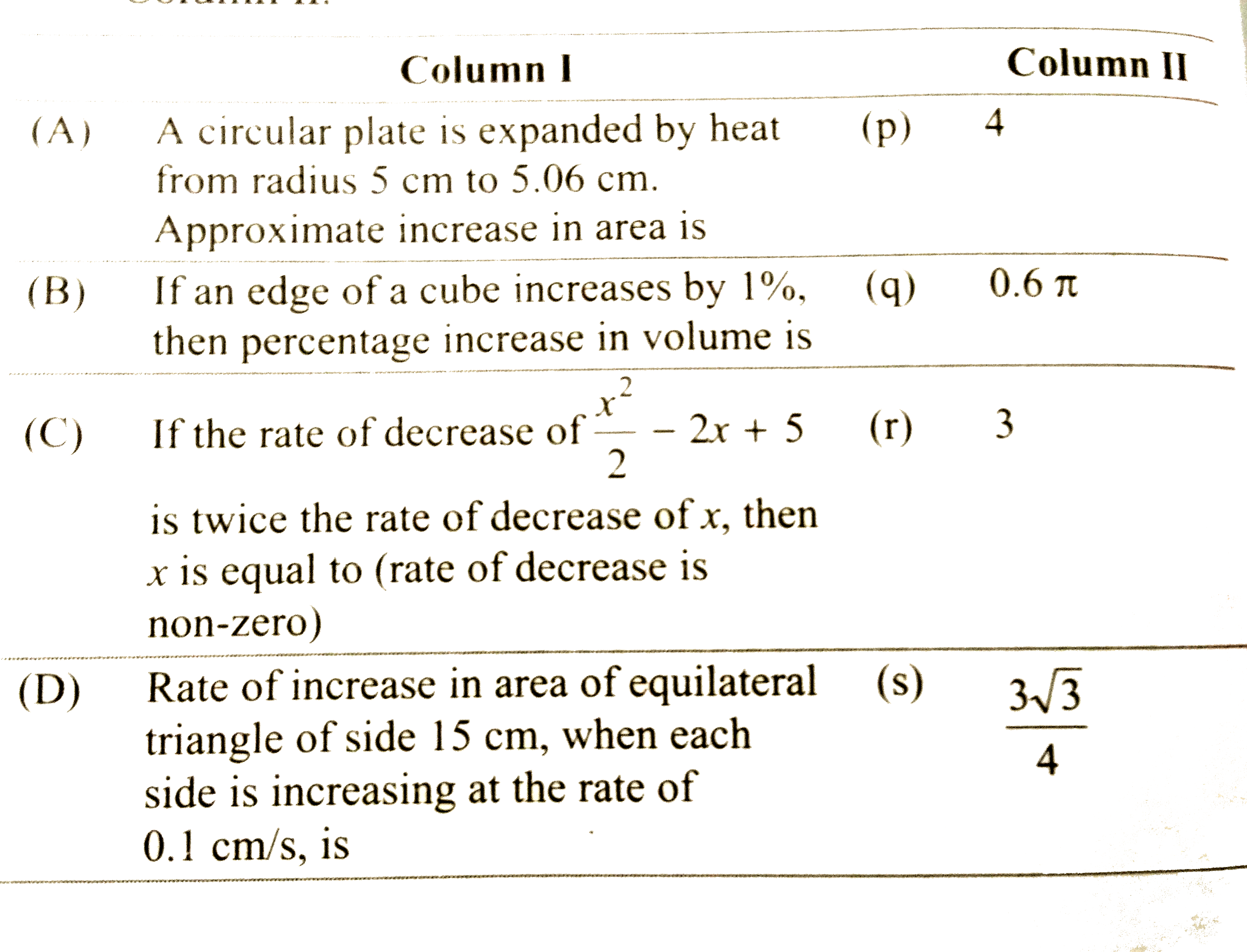Let f(x)=ln(2+x)−2x+2x.
Statement I The function f(x) =0 has a unique solution in the domain of f(x).
Statement II f(x) is continuous in [a, b] and is strictly monotonic in (a, b), then f has a unique root in (a, b).Solution in Punjabi
The correct Answer is:C
Step by step video & image solution for Let f(x)=ln(2+x)-(2x+2)/(x). Statement I The function f(x) =0 has a unique solution in the domain of f(x). Statement II f(x) is continuous in [a, b] and is strictly monotonic in (a, b), then f has a unique root in (a, b). by Maths experts to help you in doubts & scoring excellent marks in Class 12 exams.
Updated on:21/07/2023Topper's Solved these Questions
- DY / DX AS A RATE MEASURER AND TANGENTS, NORMALS BOOK - ARIHANT MATHSCHAPTER - DY / DX AS A RATE MEASURER AND TANGENTS, NORMALS EXERCISE - Exercise (Passage Based Questions)
8 Videos
- DY / DX AS A RATE MEASURER AND TANGENTS, NORMALS BOOK - ARIHANT MATHSCHAPTER - DY / DX AS A RATE MEASURER AND TANGENTS, NORMALS EXERCISE - EXERCISE : 5
1 Videos
- DY / DX AS A RATE MEASURER AND TANGENTS, NORMALS BOOK - ARIHANT MATHSCHAPTER - DY / DX AS A RATE MEASURER AND TANGENTS, NORMALS EXERCISE - Exercise (More Than One Correct Option Type Questions)
15 Videos
- DIFFERENTIATION BOOK - ARIHANT MATHSCHAPTER - DIFFERENTIATION EXERCISE - Exercise For Session 10
4 Videos
- ELLIPSEBOOK - ARIHANT MATHSCHAPTER - ELLIPSEEXERCISE - Exercise (Questions Asked In Previous 13 Years Exam)
26 Videos
Similar Questions
Find dydxify=ex−2x
View SolutionMatch the statements of Column I with values of Column II.

View SolutionFor the curve represented parametrically by the equation, x=2log(cott)+1 and y=tant+cott,tangent and normal intersect at point (2,1)
View SolutionThe functions f(x)−ex+x, being differentiable and one-one, has a differentiable inverse f−1(x) The value of ddxf−1 at the point f(log2) is
View SolutionThe minimum area of the triangle formed by the tangent to x2a2+y2b2=1 and the coordinate axes is
View SolutionIf f(x)=∫x8+4x4−2x2+2dx and f(0)=0,then (a)f(x) is an odd function (b)f(x) has range R (c)f(x) has at least one real root (d)f(x) is a monotonic function.
View SolutionLet f(x)=x^(2)+ax+b, where a,b in R. If f(x)=0 has all its roots imaginary then the roots of f(x)+f'(x)+f(x)=0 are
View SolutionStatement-1 : f(x) = 0 has a unique solution in (0,pi). Statement-2: If g(x) is continuous in (a,b) and g(a) g(b) <0, then the equation g(x)=0 has a root in (a,b).
View SolutionLet f(x)=ln(2+x)−2x+2x Statement-1: The equation f(x)=0 has a unique solution in the domain of f(x) . Statement-2: If f(x) is continuous in [a,b] and is strictly monotonic in (a,b) then f has a unique root in (a,b)
View SolutionLet f(a)>0, and let f(x) be a non-decreasing continuous function in [a,b]. Then,1b−a∫baf(x)dx has the
View SolutionLet f be continuous on [a;b] and differentiable on (a;b) If f(x) is strictly increasing on (a;b) then f'(x)>0 for all x∈(a;b) and if f(x) is strictly decreasing on (a;b) then f'(x)<0 for all x∈(a;b)
View SolutionLet f(x) a twice differentiable function in [a,b], given that f(x) and f''(x) has same sign in [a,b].
Statement I f'(x)=0 has at the most real root in [a,b].
Statement II An increasing function can intersect the X-axis at the most once.
View SolutionLet f(x) be a continuous function (define for all x) which satisfies f3(x)−5f2(x)+10f(x)−12≥0,f2(x)+3≥0andf2(x)−5f(x)+6≤0
If distinct positive number b1,b2andb3 ar in G.P. then f(1)+lnb91),f(2)+lnb2,f(3)+lnb3 are in :
View SolutionLet f(x)=x2+ax+b, where a, b ∈R . If f(x) =0 has all its roots imaginary , then the roots of f(x) + f'(x) + f(x) =0 are :
View SolutionLet f(x)=x2+ax+b, where a,b∈R. If f(x)=0 has all its roots imaginary, then the roots of f(x)+f'(x)+f''(x)=0 are
View Solutiona,b∈R be such that the function f given by f(x)=ln|x|+bx2+ax,x≠0 has extreme values at x=−1 and x = 2.
Statement-I : f has local maximum at x = -1 and at x = 2.
Statement-II : a=12 and b=−14.
View Solution
